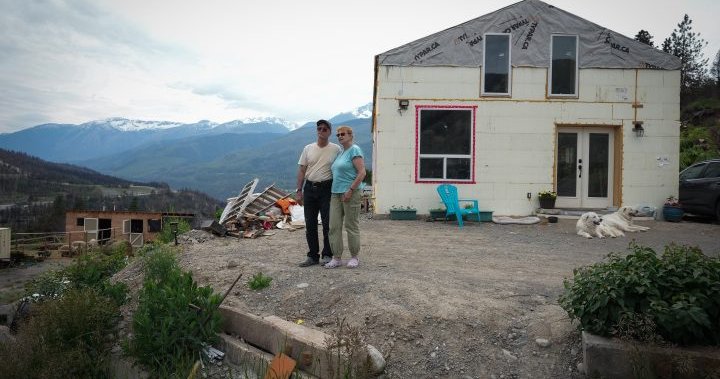
B.C. wildfires: How Lytton is breaking ground to climate-proof community
Global News
A year after a wildfire destroyed Lytton, residents, municipal leaders, and the B.C. government are grappling with future-proofing a community against climate change.
A year after a wildfire destroyed the western Canadian village of Lytton, residents, municipal leaders, and the British Columbia government are grappling with the slow and costly reality of future-proofing a community against climate change.
The remote village sits at the confluence of the Fraser and Thompson rivers in the high, dry mountains of interior B.C., making it a bullseye for fires and landslides. In June 2021, 90% of Lytton’s structures burned down, a day after the village recorded Canada’s hottest-ever temperature.
Now officials have a unique opportunity to rebuild an entire community from scratch using fire-safe materials and energy efficient building standards.
But long-term disaster mitigation plans and net-zero ambitions are running up against the realities of human impatience and reimbursement limits from insurers. Burned-out residents, many still living in temporary accommodation, want to rebuild homes and get on with their lives.
“There’s a distinct difference between what would be ideal and what’s realistic,” said Tricia Thorpe, 61, who lost her home in the fire.
“I don’t think anybody has a problem with building fire-smart, but they’re trying to build a model village. They’re talking about solar (panel) sidewalks.”
As climate change intensifies the risk of destructive weather is rising, spurring focus on how communities are built.
Insured damage for severe weather events across Canada hit C$2.1 billion ($1.63 billion) last year, according to the Insurance Bureau of Canada (IBC), including C$102 million for the Lytton fire. Since 1983, Canadian insurers have averaged about C$934 million a year in severe weather-related losses.





















 Run 3 Space | Play Space Running Game
Run 3 Space | Play Space Running Game Traffic Jam 3D | Online Racing Game
Traffic Jam 3D | Online Racing Game Duck Hunt | Play Old Classic Game
Duck Hunt | Play Old Classic Game











